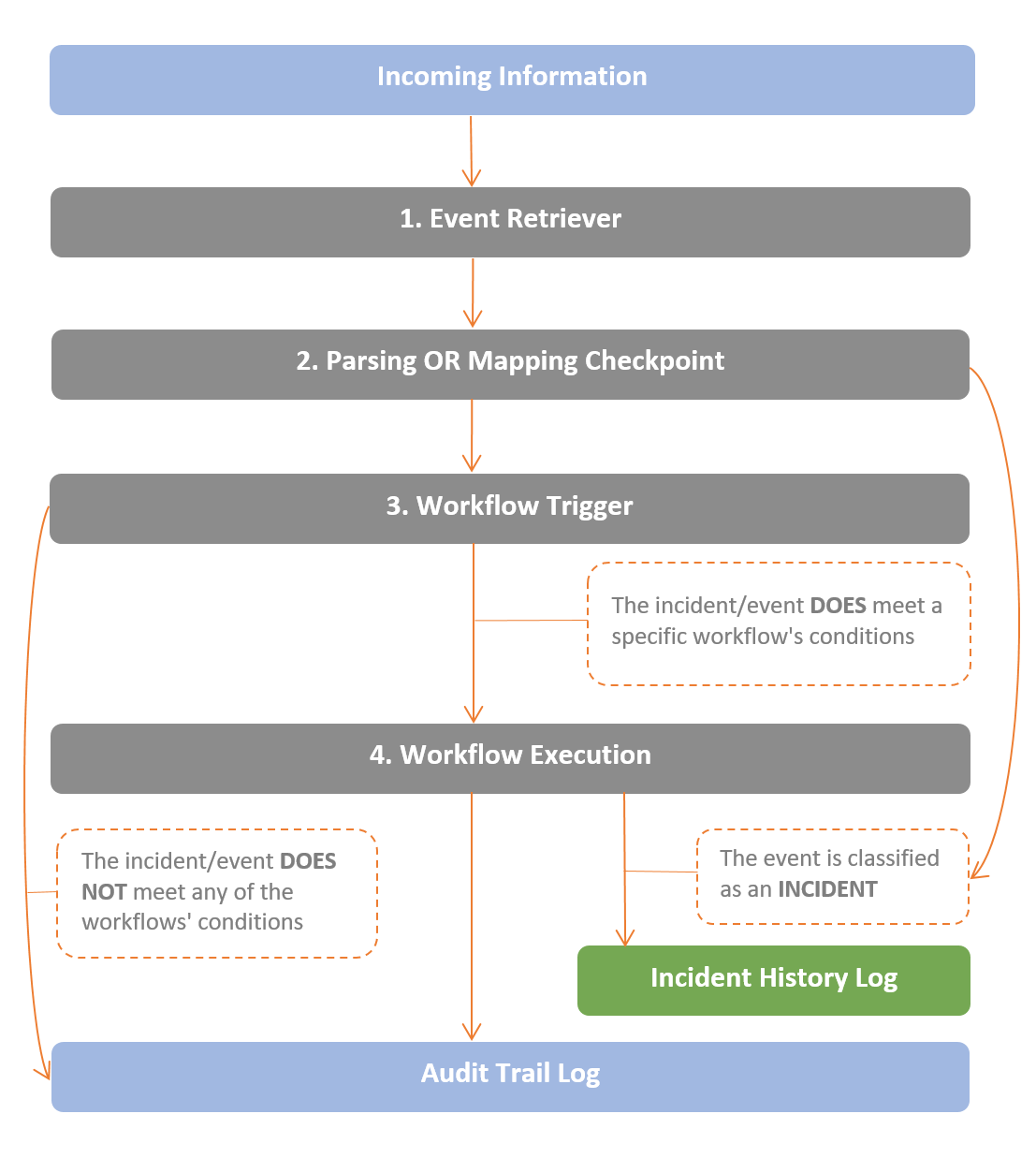Understanding the Data Flow
Resolve Actions Express functions as an informational pipeline of events.
Every event (an incoming email, a syslog message, an SNMP Alarm, etc.) is retrieved by the Event Retriever and then arrives at the Parsing/Mapping Checkpoint, as the figure below shows.

Traditionally, events that originate from an integrated module (for example: ServiceNow, McAfee, BMC Remedy etc.) are mapped, and events which originate from the built-in components are parsed, but it is also possible to parse events from the integrated modules. Whatever the case, by the end of the parsing/mapping process the event may be classified as an Incident. An incident is an event with several additional characteristics:
- Incidents provide Resolve Actions Express their originating device, their duration and their classification. This information may be broken down and used in reports, in conditions and within running workflows.
- Incidents have a current state - up/down. Workflows may be invoked upon a change of state.
- Incidents are counted and registered to the Incident History Log.
After the parsing/mapping checkpoint, events are checked by the Workflow Trigger. If certain conditions apply, the event (basic or incident) will invoke a procedural workflow at the Workflow Execution Point. Regardless of whether a workflow is invoked, each event (basic or incident) is registered to the Audit Trail Log. Events classified as Incidents are also registered to the Incident History Log.
The pipeline uses four handlers:
- The Event Retriever - retrieves information from the pipeline.
- The Parsing/Mapping Checkpoint - classifies the event as an incident or a basic event.
- The Workflow Trigger - decides whether or not to invoke a workflow.
- The Workflow Execution Point - executes the workflow.
In subsequent chapters in this User Guide, you will be shown where you are in the pipeline with a diagram like this:
